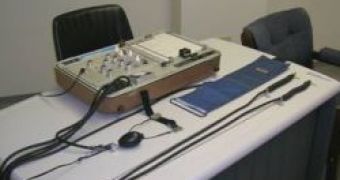The results obtained after running a polygraph (lie detector) test have always been looked upon with doubt, but a new type of lie detector might soon take its place.
And the new lie detector is in fact the technology called functional magnetic resonance imagining (fMRI), and the first to have tested the efficiency are the researchers at the Temple University Hospital in Philadelphia.
The functioning principle is simple, the fMRI showing the specific areas of the brain which light up when a person tells a lie.
"We have detected areas of the brain activated by deception and truth-telling by using a method that is verifiable against the current gold standard method of lie detection, the conventional polygraph," said lead author Feroze B. Mohamed, Ph.D.
He says that the standard polygraph test has failed to produce consistently reliable results, largely because it relies on outward manifestations of certain emotions that people feel when lying. These manifestations, including increased perspiration, changing body positions and subtle facial expressions, while natural, can be suppressed by a large enough number of people, so that the accuracy and consistency of the polygraph results can easily be compromised.
"Since brain activation is arguably less susceptible to being controlled by an individual, our research will hopefully eliminate the shortcomings of the conventional polygraph test and produce a new method of objective lie detection that can be used reliably in a courtroom or other setting," Dr. Mohamed added.
Functional MRI is based on the increase in blood flow to the local vasculature that accompanies neural activity in the brain.

 14 DAY TRIAL //
14 DAY TRIAL //